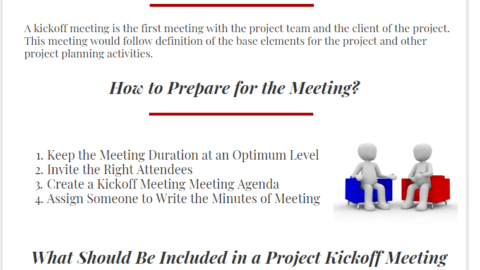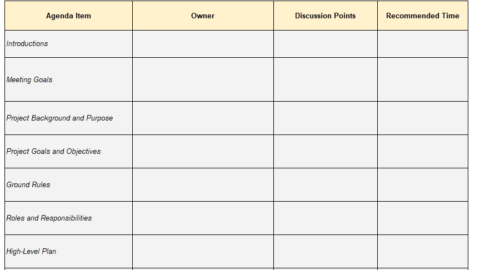Types of Organizational Structures
Which one is the best organizational structure? Actually, it is difficult to answer this question. Because there are many factors affect the success of organizations and projects. Selecting the most profitable project alternative, having a well-defined mission, possessing an innovative vision, selling a product that is in high demand, using technology are some of them. Beyond these, a company’s organizational structure plays a key role in its success. An organizational structure provides a system that defines hierarchy and reporting lines within the organization. Departments and their functions, reporting hierarchy, relationships are defined during the development of an organizational structure. This article answers the question: What are the 4 types of organizational structures? and discusses the different types of organizational structures and their outstanding features.
Table of Contents
Why an Organizational Structure is Needed?
Organizations are established in typical ways to reach different targets, and the structure of an organization can expedite or complicate its progress toward reaching these targets. In an organization, without structure, nobody knows whom to report and unclear roles and responsibilities can cause issues.
There are many different types of organizational structures prepared in organizations. The types of organization structures depend on many factors, such as type of organization, workflow, hierarchy and leadership styles.
Organizational structure provides guidance to all employees determining official reporting relationships. Also, it defines the hierarchy and workflow of the company. Organizational structure improves productivity by defining the employees level and responsibilities of a company
Poorly designed organizational structures create confusion and reduce the quality of decision making within the organization.
What are the 4 Types of Organizational Structures ?
There are various types of organizational structures that represent different companies hierarchical reporting system.
The PMBOK Guide classifies organization structure into the four categories:
1. Functional Organization
2. Matrix Organization
3. Projectized Organization
4. Composite Organization
Also, other classifications can be done but in this article, we are using The PMBOK Guide classifications.
Functional Organizational Structure
A Functional Organization structure is also known as a bureaucratic organizational structure which divides the company into departments such as marketing department, engineering department, sales department, etc.
Most of the organizations are divided into specific departments and teams to perform specific roles. Each department has a manager and the team members work under the supervision of the department manager. Likewise, each department manager reports to a higher-level manager who supervises multiple departments.
For example, a manager of research-development department supervises the team members and reports to a vice president who is responsible for research-development operations.
One of the advantages of functional organizational structures is that team members are grouped by their skills and functions within the organization. The team members use their energies and expertise to perform their roles as a team.
A disadvantage of functional organizational structures is that there is a lack of communication between the functional departments. Most of the discussions take place at department managers or higher levels.
Matrix Organizational Structure
A Matrix Organization structure has the characteristics of both functional and projectized organization structures. It is one of the most common types of organizational structures. Employees report to multiple managers depending on the requirements. For example, a project control engineer is working under the supervision of project control manager. But the company is preparing an offer for a specific project and the engineer’s knowledge is needed. During the preparation of the offer, the engineer both reports to his manager and the bidding manager.
A Matrix Organization structure is a company structure in which the reporting relationships are established as a matrix. An employee may have vertical and horizontal reporting lines. Also, an employee may be part of multiple departments and may have multiple managers.
Matrix organizational structures allow employees to share their expertise and decisions across the departments. However, reporting to multiple managers may cause confusion and employee dissatisfaction within the organization.
Matrix organizational structures can also be categorized as a strong matrix, weak matrix and balanced matrix based on the role and authority of the project manager.
Projectized Organization Structure
Projectized Organization structure is established specifically for a project. The project team members work under the management of the project manager and they report to him. When the project has completed the whole team will dissolve. The project manager has all the authority to manage the team and achieve the goals.
Reporting directly to the project manager reduces conflicts and speedups decision making within the projectized organization structures. Arising from the power, project managers may become arrogant and this damages the communication lines.
Another disadvantage of this structure is that the cost of equipment and employees may be higher because they are employed for a short period of time.
Composite Organization Structures
Composite Organizational Structure is a combination of other types of organizational structures. A composite organizational structure may include two or more than two structures in a special project.
For example, a corporation with a functional organization structure needs a new head office building. The corporation decided to build the head office itself. Therefore a separate organizational structure is created in relation to the corporation’s organizational structure. Then the corporation’s organizational structure became a composite organization.
Summary
So, which one is the best organizational structure? All the companies and organizations are different than each other. Each organization has its own characteristics and function. Therefore the best organizational structure is the one which suits best to the organizations’ managerial requirements.
Organizational structures and reporting hierarchy must be established in all organizations in order to eliminate communication problems. Poorly established organizational structures may cause confusion within the roles and troubles within the organizations. Organization structure is important for organization productivity. Successful companies have strong organizational structures and reporting systems.
In this article, we answered the question: What are the 4 types of organizational structures ? We hope it will be useful for project teams and PMP aspirants.

Laura McLaron is a highly skilled strategist whose 25 years of experience in optimizing businesses and inspiring individuals has transformed ActionX Consulting to one of the premier talent management and learning and training firms in the global marketplace.










